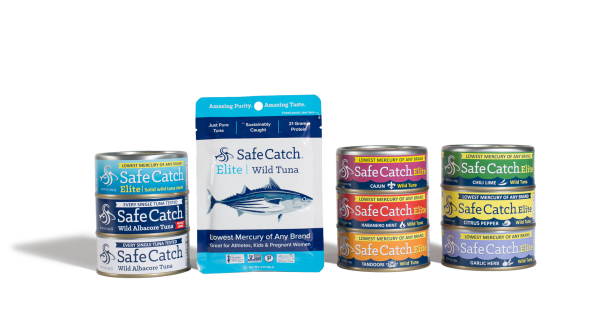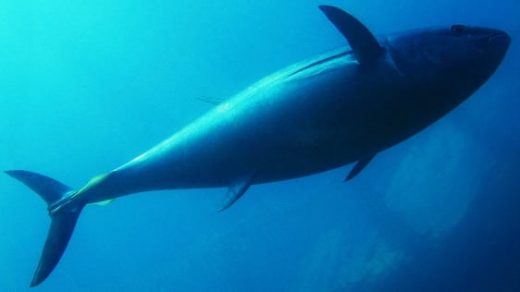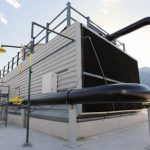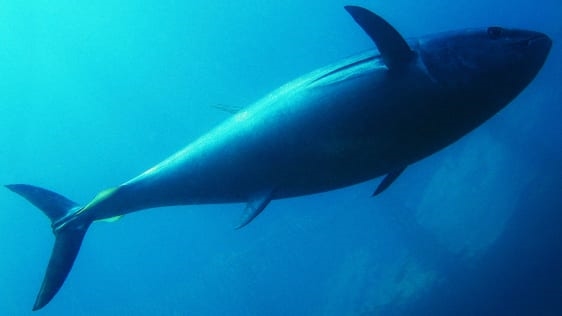This Mercury-Safe Tuna Company Is On A Mission To Clean Up The Oceans
As Sean Wittenberg was wrapping up his undergrad degree at U.C. Davis in 2004, his mother was diagnosed with mercury poisoning. She’d taken to eating canned tuna for a few times a week, and developed lethargy, short-term memory loss, and an abnormal feeling of muscular weakness. This was right before the EPA released its 2004 recommendations advising pregnant women and children to avoid the fish due to mercury contamination, and the diagnosis was still uncommon.
And moreover, the risk of contamination was difficult to pin down–after all, not everyone who ate tuna developed mercury poisoning. “So I decided to invent a machine to test for mercury levels,” Wittenberg tells Fast Company. Existing mercury-level tests, Wittenberg says, required a laboratory and cost around $30 per single analysis, and took weeks to produce a result; he wanted something more compact, less expensive, and able to analyze mercury levels in a single fish on the spot “to ensure that the situation that happened to my mom wouldn’t happen to anyone else.”
Wittenberg’s original idea was to develop the technology, pass it off to the government or to fishing industry businesses, and move on and do something else with his life. He and a small team raised millions of dollars to develop a technology that could test a fish in seconds for a fraction of the current costs. Compared to other available testing mechanisms, like Atomic Absorption Spectrometry, which determines the concentration of mercury via a complicated process of measuring the element’s radiation, Wittenberg’s method was simple: Taking a biopsy of the tuna flesh, and testing its mercury concentration via a proprietary analysis system.

But when Wittenberg brought it to the FDA as a solution, the agency didn’t have the bandwidth to implement the technology; fish companies, Wittenberg says, were interested, but didn’t want to use the test to enforce the low, health-protective mercury level Wittenberg was advocating for.
“So we turned our back on these big tuna companies and decided that we were going to develop our own products,” Wittenberg says. That was the birth of Safe Catch, a canned tuna company which lays claim to delivering “the lowest mercury of any brand” of tuna on the market. As oceans have become more polluted and testing standards are either spottily implemented or nonexistent, quality in the seafood industry–not to mention, ethical labor practices–have become notoriously hard to enforce. The FDA states that a mercury concentration of over 1 part per million is a cause for concern; Safe Catch’s health standard of .1 ppm, which they arrived at through consulting with experts at the Environmental Working Group and Harvard School of Public Health, is 10 times stricter.
To be able to ensure that kind of health standard across all its products, though, Wittenberg and his team had to set up their own supply chain. In 2014, around a decade after first developing and then finessing their proprietary testing technology, the team built out a testing and packaging facility in Thailand, where half of the world’s shelf-stable tuna is canned (Wittenberg’s co-founder, Bryan Boches, has a background in finance and was able to bootstrap the operation). “We set up there because there’s more access to raw materials there than anywhere else in the world, but also because there are more outlets for the fishermen to sell their products if it doesn’t meet our standards,” Wittenberg says.
And Safe Catch sets very high standards for the fish to meet. First, the team inspects the fish to ensure it meets conventional standards: It has to fall within the normal size for the particular type of tuna, and display no visible deformities or strange odors that indicate disease. Then, Safe Catch partnered with the Monterey Bay Aquarium Seafood Watch Program–a global authority on sustainable and ethical seafood standards–to ensure the catch methods and labor practices of the fishing companies they source from fall in line with those standards. The Seafood Watch Program has spent years developing a set of guiding principles, from minimizing bycatch to protecting endangered species, that define sustainable and ethical fisheries, and they warn consumers and businesses of which fisheries fail to comply with their standards. Furthermore, Safe Catch only sources from fisheries that have been certified by the U.S. Department of Commerce. Only after the fish pass through both of those quality hoops are they tested for mercury, Wittenberg says.
To carry out the mercury test, Safe Catch takes a small flesh biopsy (around the size of a grain of rice), using a syringe-like tool. The sample is then injected into the technology interface–a sleek console with a touch-screen interface. On the screen, the Safe Catch team enters data about the origin and size of the fish; the analysis of the mercury level takes under a minute. Those fish that don’t pass the test are returned to the fishermen and likely sold to other tuna companies; the ones that pass are canned and shipped to North America, where its sold in around 7,500 locations (compared to conventional canned tuna, it retails for around double the price–a premium which the health conscious, especially parents, are, according to Wittenberg, willing to pay). In all, since launching, Safe Catch has performed around 1 million mercury-level tests.
The scrupulousness with which the company carries out its testing and data collection, Wittenberg says, is translating into a greater purpose for the company. “The company is not just about providing pure seafood, but about protecting the purity in our oceans,” he says. “Coal-fired power plants are the No. 1 culprit when it comes to adding mercury to our environment, and we’ve always wanted to figure out a way to help mitigate the impact of industrial pollution.”
The way Safe Catch plans to tackle pollution is through data analytics. “By us being able to test these fish, and to have traceability to that exact spot where the fish was caught, an understanding of the trajectory that it traveled, we can assign a mercury concentration to that school of fish,” Wittenberg says. As Safe Catch collects more data, they’re hoping they’ll be able to zero in on the exact plants and facilities that are responsible for elevating mercury concentrations in certain fish populations; right now, they only have enough to trace the origins of the mercury to vague geographic locations.
“Right now, people don’t know where to place their energy to make change,” Wittenberg says. While Safe Catch is zeroing in providing a more pure variety of a notoriously contaminated fish, the company hopes that its efforts will eventually lead to a cleaner supply chain for all tuna and seafood companies.
Fast Company , Read Full Story
(25)














